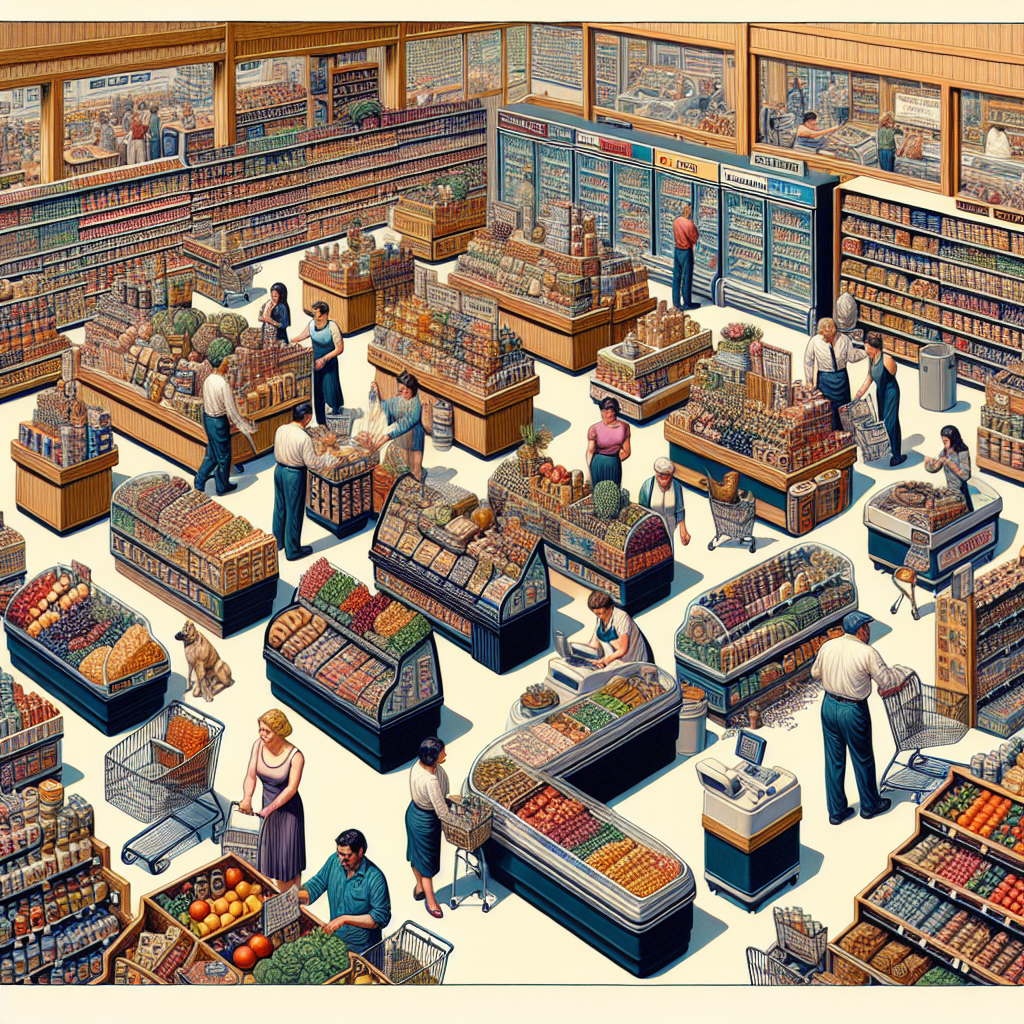The State of the Global Grocery Retail Industry in 2025: Trends, Challenges, and Opportunities
The grocery retail industry is a crucial part of the global economy, providing essential products and services to consumers around the world. In 2025, the industry is facing a number of trends, challenges, and opportunities that are shaping its future. This report will explore the current state of the global grocery retail industry, with a focus on market share by country, specifically looking at who leads in the US.
Global Grocery Retail Market Overview
The global grocery retail market is a massive industry that is worth billions of dollars. According to data from CulinaryCoverage.com, the market is projected to reach $11.44 trillion by 2025, with a compound annual growth rate (CAGR) of 4.2% from 2020 to 2025. The industry is highly competitive, with a large number of players vying for market share in countries around the world.
Key Players in the Global Grocery Retail Industry
Some of the key players in the global grocery retail industry include Walmart, Costco, Kroger, Tesco, and Carrefour. These companies are multinational giants that operate in multiple countries and regions, providing a wide range of products and services to consumers. Walmart, in particular, is the largest grocery retailer in the world, with a significant presence in the US market.
Grocery Retail Market Share by Country
United States
In the United States, the grocery retail market is dominated by a few major players. According to data from CulinaryCoverage.com, Walmart is the largest grocery retailer in the US, with a market share of 22.1% as of 2025. The company operates a vast network of stores across the country, offering a wide range of products at competitive prices.
Other major players in the US grocery retail market include Kroger, Costco, and Albertsons. Kroger is the second-largest player in the market, with a market share of 10.5%, followed by Costco with 8.3% and Albertsons with 6.9%. These companies operate a mix of traditional grocery stores, warehouse clubs, and online platforms to reach consumers.
Challenges and Opportunities in the US Grocery Retail Market
The US grocery retail market is facing a number of challenges, including increasing competition from online retailers like Amazon and changing consumer preferences. With more consumers shopping online for groceries, traditional brick-and-mortar retailers are having to adapt to new ways of doing business.
Despite these challenges, there are also opportunities for growth in the US grocery retail market. Companies that can innovate and offer unique products and services to consumers stand to gain market share and increase their profitability. By leveraging technology and data analytics, retailers can better understand consumer preferences and tailor their offerings to meet demand.
Future Trends in the Global Grocery Retail Industry
Looking ahead, the global grocery retail industry is expected to continue evolving in response to changing consumer behaviors and technological advancements. Some of the key trends that are likely to shape the industry in the coming years include:
– Increased focus on sustainability and environmental responsibility
– Growth of online grocery shopping and delivery services
– Expansion of private label and exclusive brands
– Integration of technology, such as artificial intelligence and automation, into operations
By staying ahead of these trends and adapting to the changing landscape of the grocery retail industry, companies can position themselves for success in the years to come.
In conclusion, the global grocery retail industry is a dynamic and competitive market that is constantly evolving. In the US, Walmart leads the market with a significant market share, but other players like Kroger, Costco, and Albertsons are also major players in the industry. By understanding the trends, challenges, and opportunities facing the industry, companies can better position themselves for success in the years to come.



